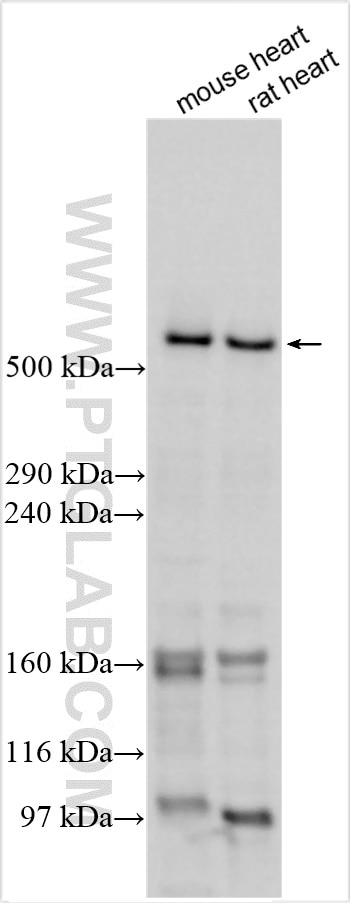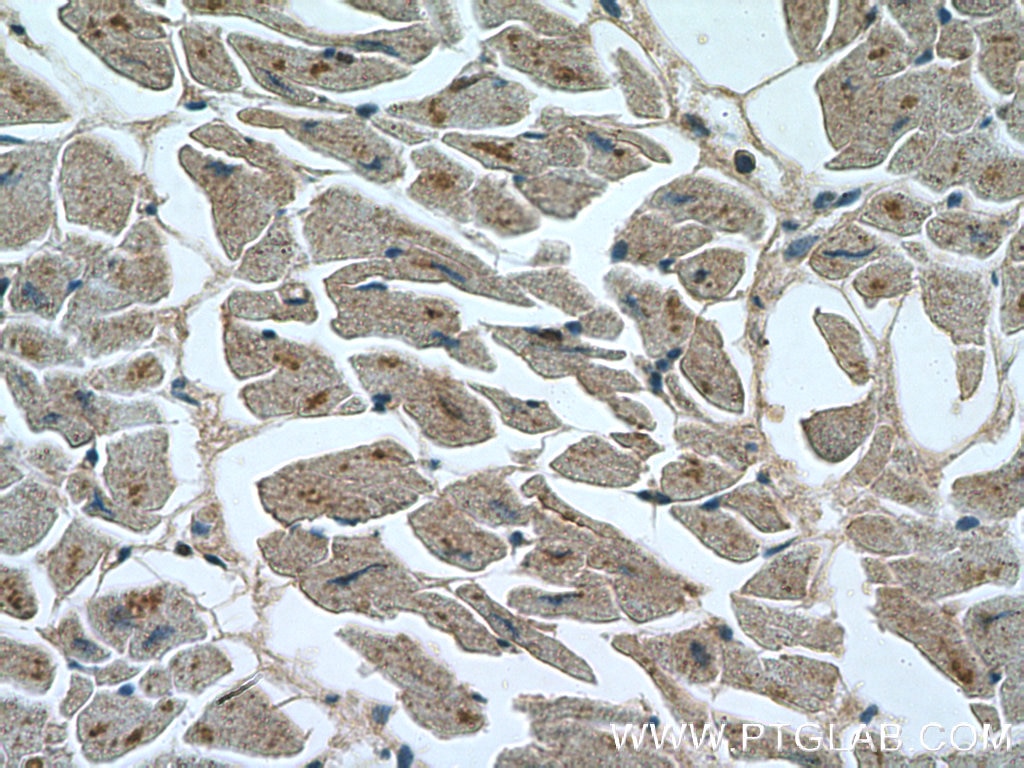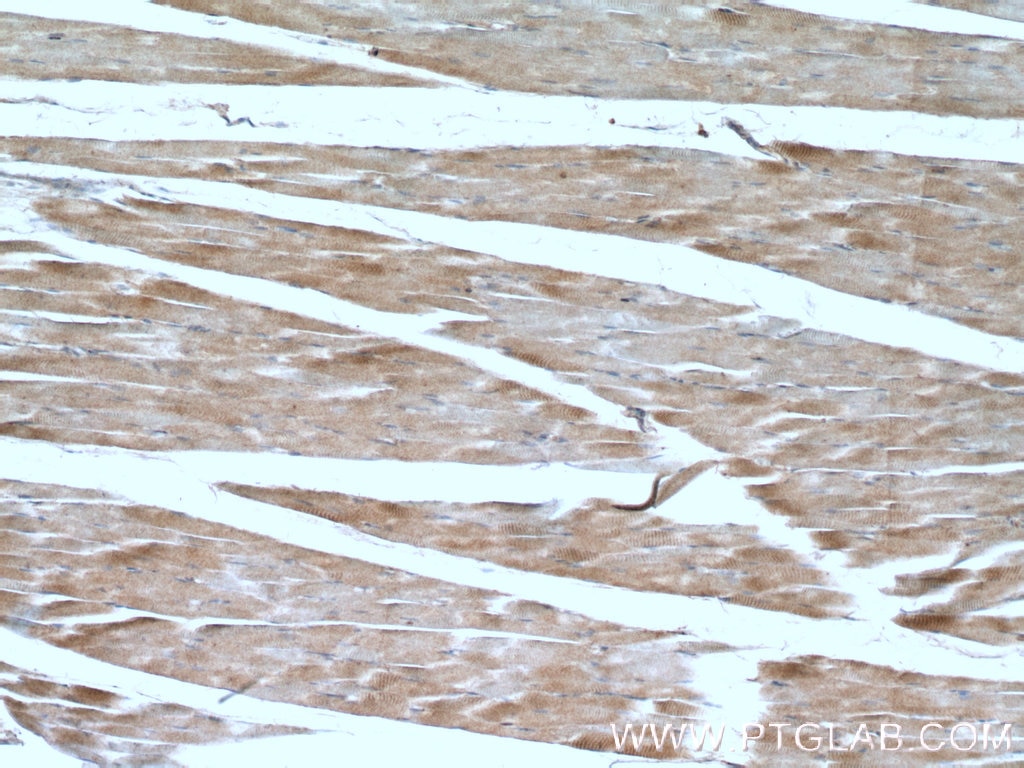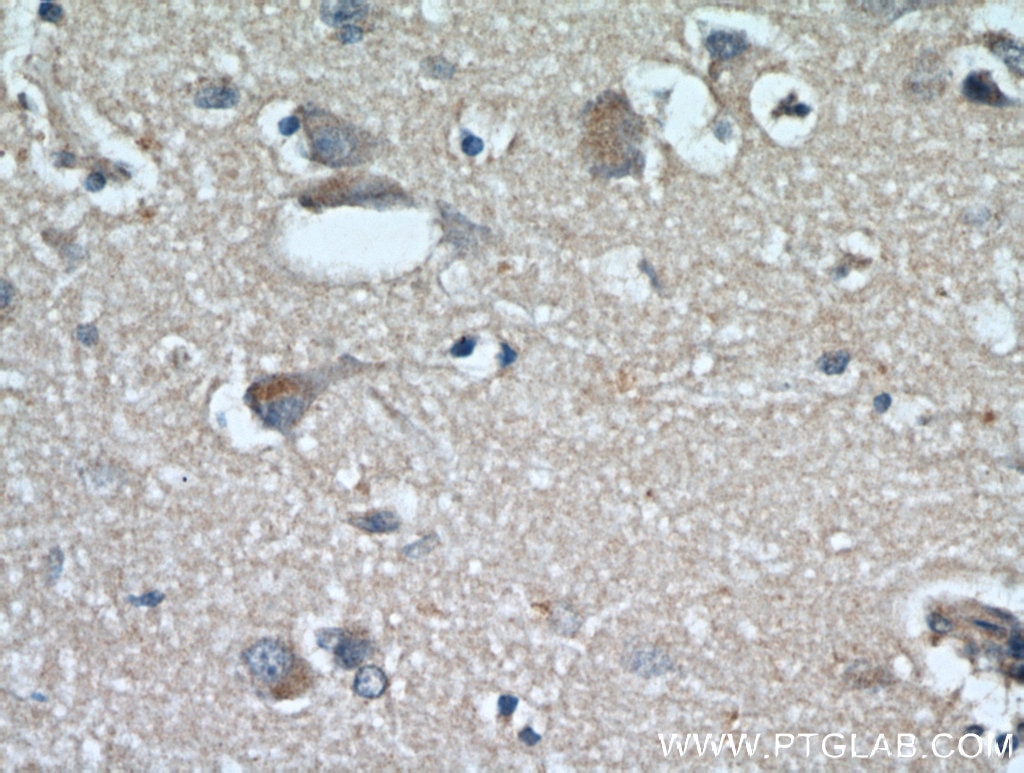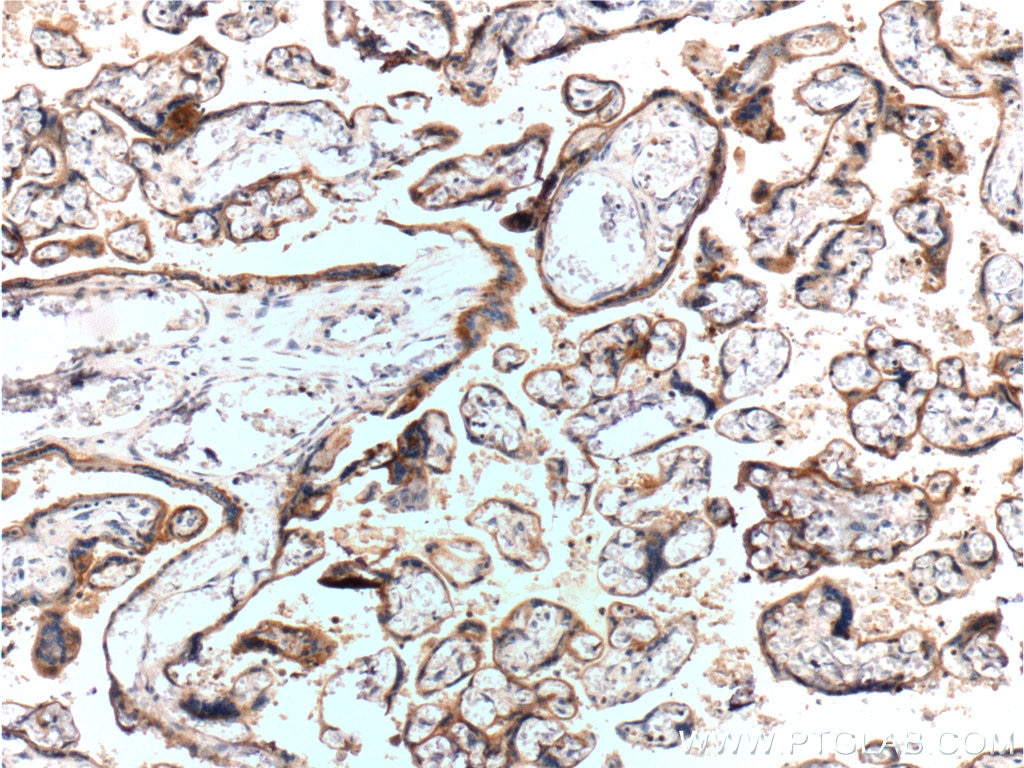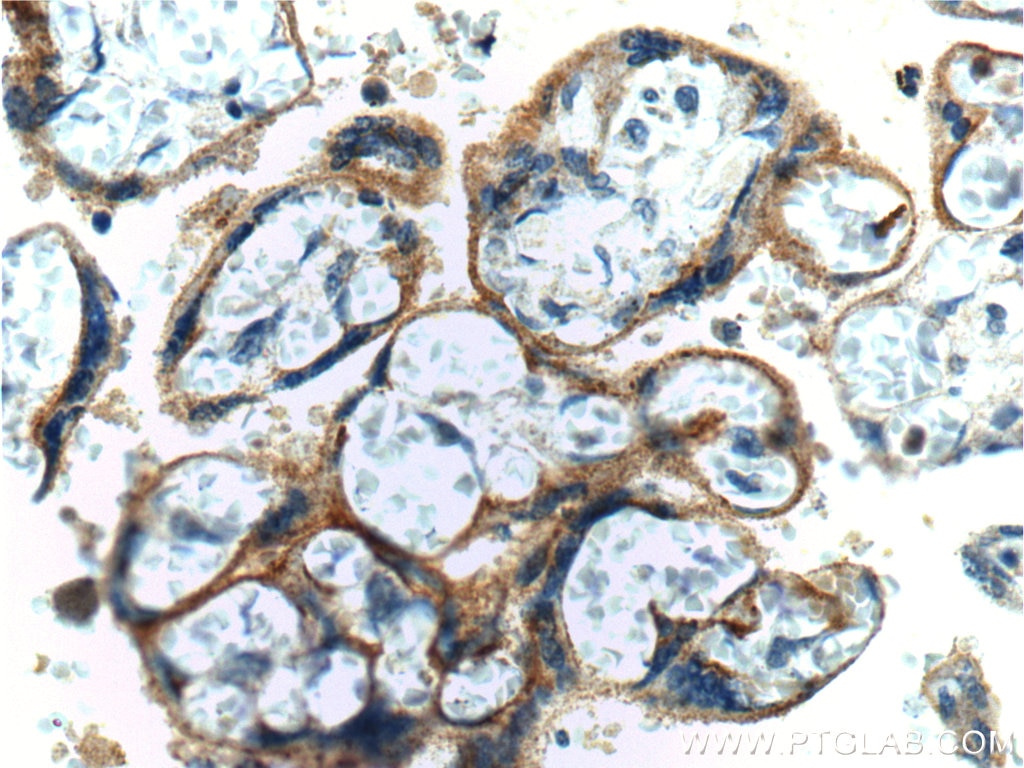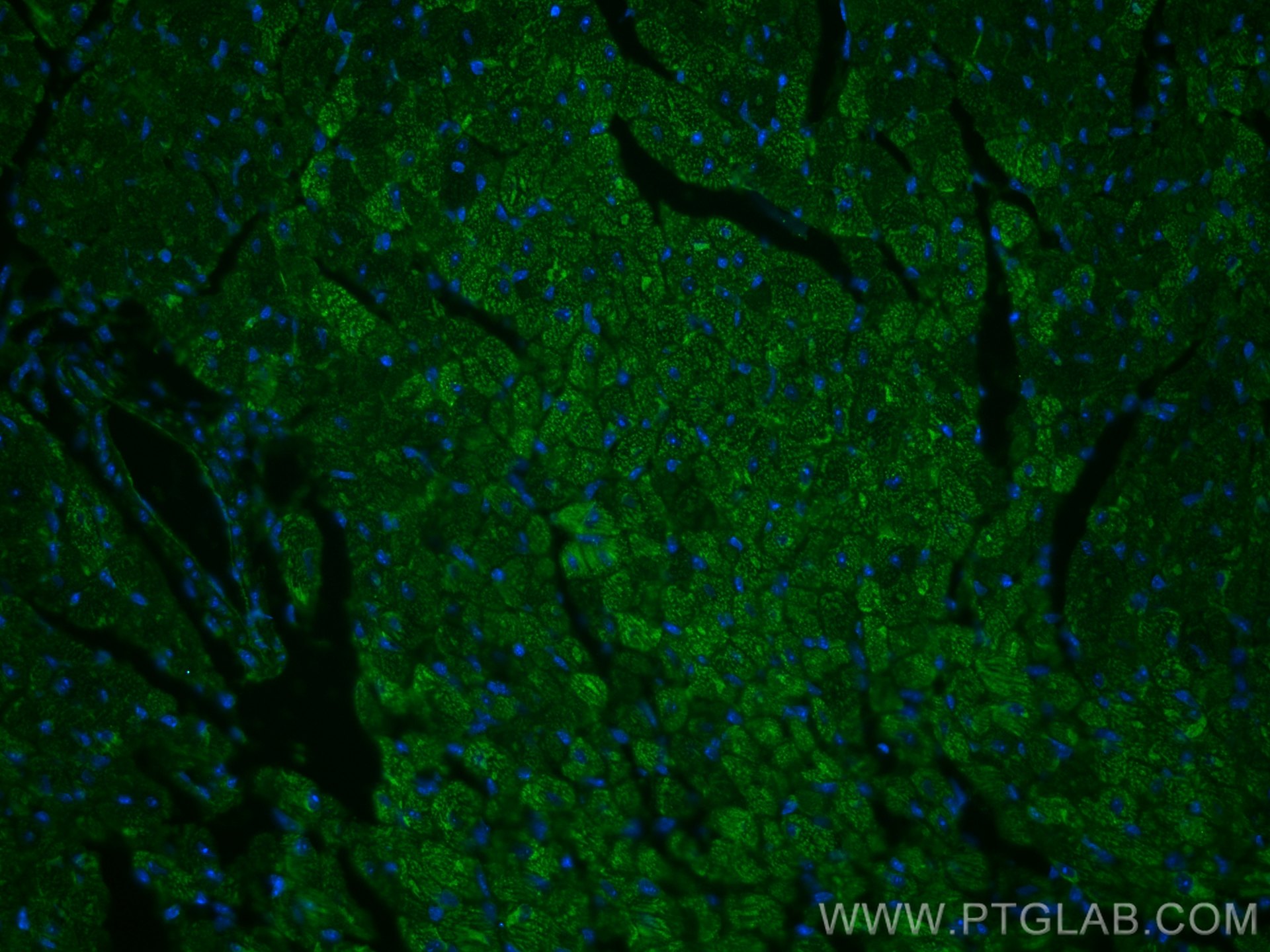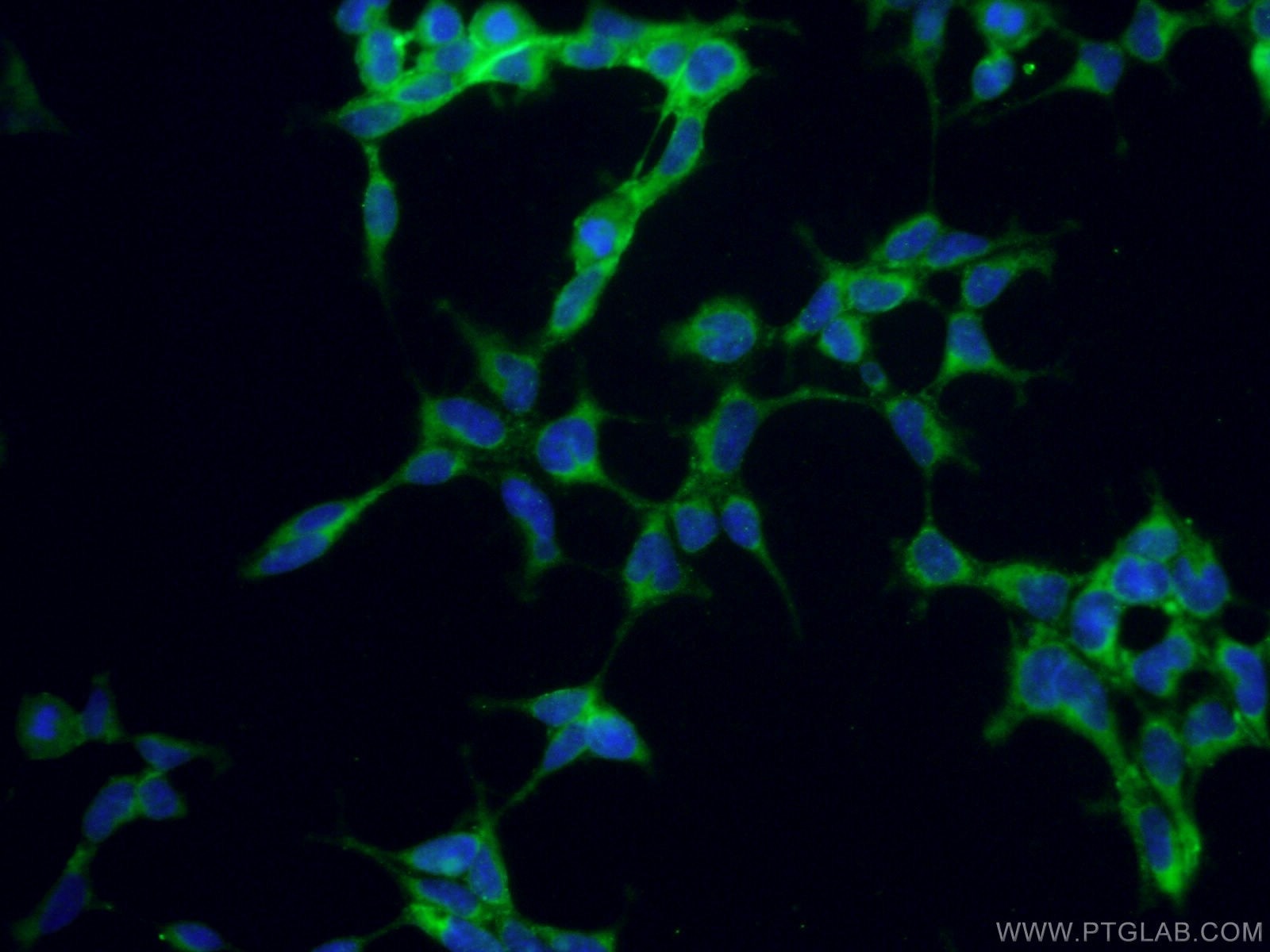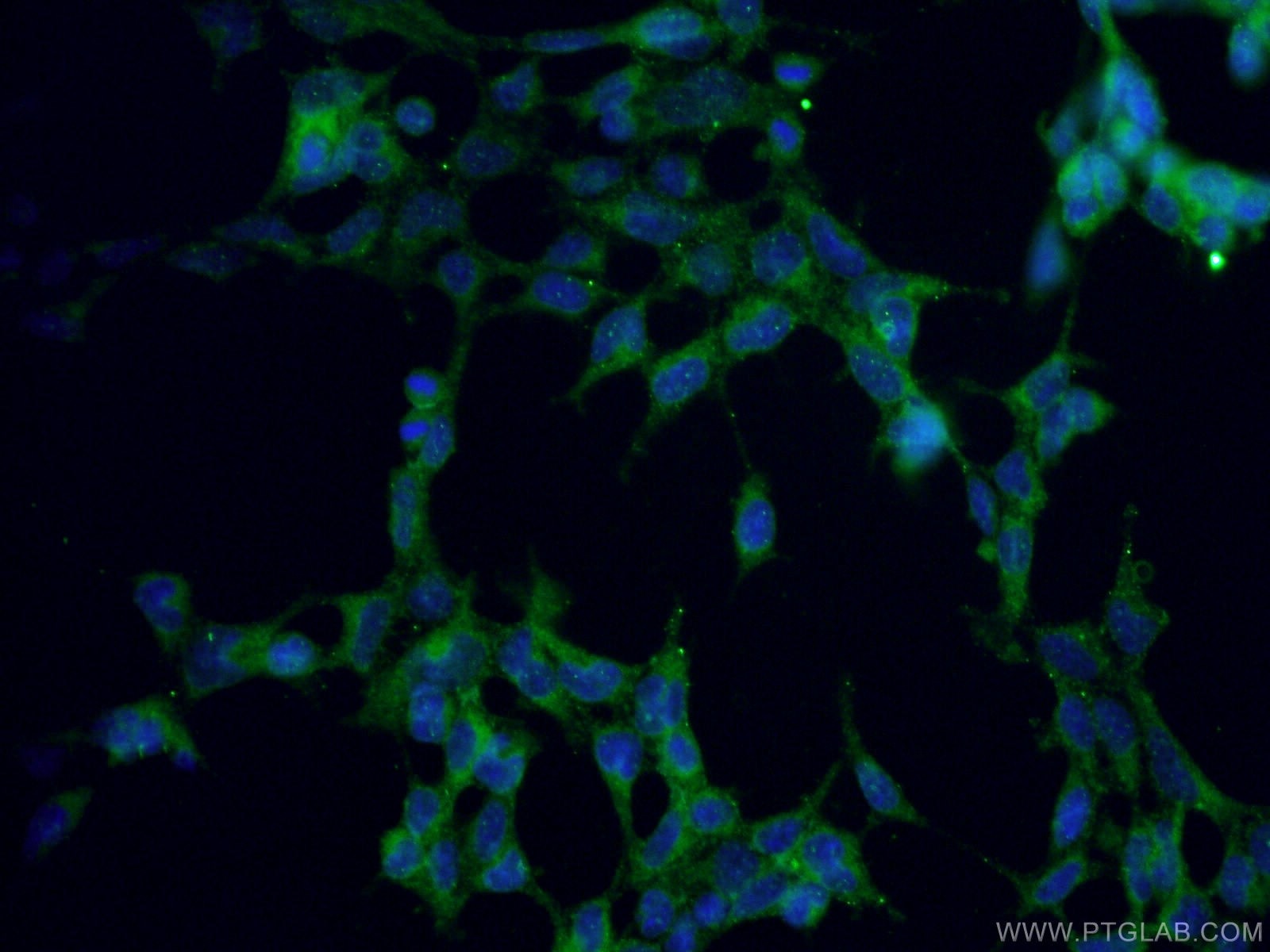Anticorps Polyclonal de lapin anti-RYR2
RYR2 Polyclonal Antibody for WB, IHC, IF/ICC, IF-P, ELISA
Hôte / Isotype
Lapin / IgG
Réactivité testée
Humain, rat, souris
Applications
WB, IHC, IF/ICC, IF-P, ELISA
Conjugaison
Non conjugué
N° de cat : 19765-1-AP
Synonymes
Galerie de données de validation
Applications testées
| Résultats positifs en WB | tissu cardiaque de souris, tissu cardiaque de rat |
| Résultats positifs en IHC | tissu cardiaque humain, tissu cérébral humain, tissu de muscle squelettique humain, tissu placentaire humain il est suggéré de démasquer l'antigène avec un tampon de TE buffer pH 9.0; (*) À défaut, 'le démasquage de l'antigène peut être 'effectué avec un tampon citrate pH 6,0. |
| Résultats positifs en IF-P | tissu cardiaque de souris, |
| Résultats positifs en IF/ICC | cellules HEK-293, |
Dilution recommandée
| Application | Dilution |
|---|---|
| Western Blot (WB) | WB : 1:1000-1:6000 |
| Immunohistochimie (IHC) | IHC : 1:100-1:400 |
| Immunofluorescence (IF)-P | IF-P : 1:50-1:500 |
| Immunofluorescence (IF)/ICC | IF/ICC : 1:50-1:500 |
| It is recommended that this reagent should be titrated in each testing system to obtain optimal results. | |
| Sample-dependent, check data in validation data gallery | |
Applications publiées
| KD/KO | See 1 publications below |
| WB | See 26 publications below |
| IHC | See 2 publications below |
| IF | See 3 publications below |
Informations sur le produit
19765-1-AP cible RYR2 dans les applications de WB, IHC, IF/ICC, IF-P, ELISA et montre une réactivité avec des échantillons Humain, rat, souris
| Réactivité | Humain, rat, souris |
| Réactivité citée | rat, Humain, souris |
| Hôte / Isotype | Lapin / IgG |
| Clonalité | Polyclonal |
| Type | Anticorps |
| Immunogène | Peptide |
| Nom complet | ryanodine receptor 2 (cardiac) |
| Masse moléculaire calculée | 565 kDa |
| Numéro d’acquisition GenBank | NM_001035 |
| Symbole du gène | RYR2 |
| Identification du gène (NCBI) | 6262 |
| Conjugaison | Non conjugué |
| Forme | Liquide |
| Méthode de purification | Purification par affinité contre l'antigène |
| Tampon de stockage | PBS with 0.02% sodium azide and 50% glycerol |
| Conditions de stockage | Stocker à -20°C. Stable pendant un an après l'expédition. L'aliquotage n'est pas nécessaire pour le stockage à -20oC Les 20ul contiennent 0,1% de BSA. |
Informations générales
RYR2 belongs to the ryanodine receptor family. RYR2 provides communication between transverse-tubules and sarcoplasmic reticulum. Contraction of cardiac muscle is triggered by release of calcium ions from SR following depolarization of T-tubules. Defects in RYR2 are the cause of familial arrhythmogenic right ventricular dysplasia type 2 (ARVD2) which known as arrhythmogenic right ventricular cardiomyopathy 2 (ARVC2). Defects in RYR2 are the cause of catecholaminergic polymorphic ventricular tachycardia type 1 (CPVT1) which known as stress-induced polymorphic ventricular tachycardia (VTSIP). This antibody detects a band at ~250 kDa which has been reported (PMID: 22962011).
Protocole
| Product Specific Protocols | |
|---|---|
| WB protocol for RYR2 antibody 19765-1-AP | Download protocol |
| IHC protocol for RYR2 antibody 19765-1-AP | Download protocol |
| IF protocol for RYR2 antibody 19765-1-AP | Download protocol |
| Standard Protocols | |
|---|---|
| Click here to view our Standard Protocols |
Publications
| Species | Application | Title |
|---|---|---|
Proc Natl Acad Sci U S A Subcellular activation of β-adrenergic receptors using a spatially restricted antagonist | ||
Sci China Life Sci LncRNA CCRR maintains Ca2+ homeostasis against myocardial infarction through the FTO-SERCA2a pathway | ||
Mol Metab Maternal exercise preserves offspring cardiovascular health via oxidative regulation of the ryanodine receptor | ||
Cell Mol Life Sci Zbtb16 increases susceptibility of atrial fibrillation in type 2 diabetic mice via Txnip-Trx2 signaling | ||
Mol Oncol Ryanodine receptor 2 promotes colorectal cancer metastasis by the ROS/BACH1 axis
| ||
Part Fibre Toxicol Oxygenated polycyclic aromatic hydrocarbons from ambient particulate matter induce electrophysiological instability in cardiomyocytes. |
